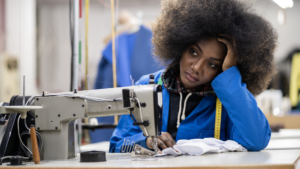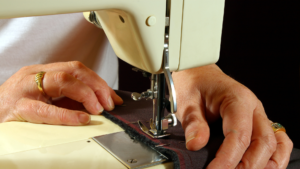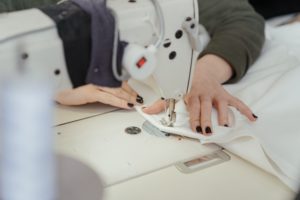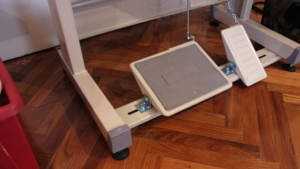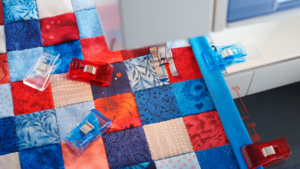Last Updated on September 8, 2021
Why do individuals use a sewing machine that they can carry? The obvious response is ‘portability.’ People have difficulty operating the hand sewing machine due to its unique size and function. Even the most experienced big-size sewing machine user has trouble when it comes to utilizing a portable sewing machine.
In this blog, we’ll walk you through how to use a handheld sewing machine step by step so that you can stitch with ease.
Step-by-step guide on how to use a handheld sewing machine
1. Load the Batteries
You must prepare the hand sewing machine for usage. A handheld sewing machine, unlike a conventional sewing machine that is powered by electricity, is powered by a battery. As a result, get the batteries in place first.
To avoid mistakenly pushing the power button when threading up the machine, enable the lock. You may also insert the AA batteries after the machine has been threaded.
Insert the AA batteries into the machine’s underside. Others prefer rechargeable batteries because they don’t cost as much as gadgets but do what works best for you.
Instead of batteries, you might be able to use a Handy Stitch power adaptor. You can purchase them online by conducting a simple web search; you can find them at various online sites.
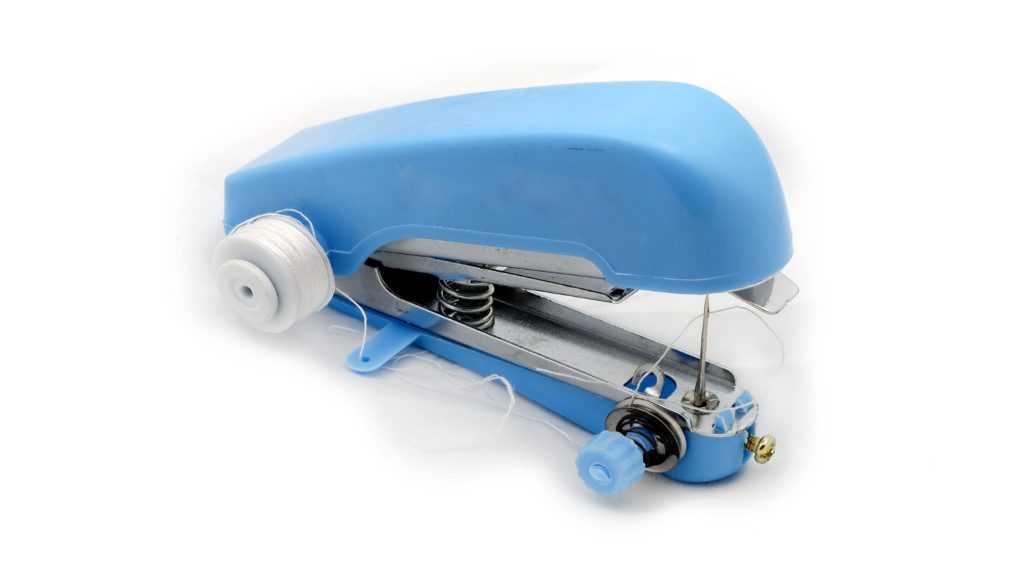
2. Set Up The Bobbin
The bobbin is the only thread supply for a portable sewing machine. The bobbin is situated on the machine’s side. Pull the bobbin holder and release it back into position, then slip the bobbin in.
A small thread spool and a more significant thread spool or thread spindle are included with the Handy Stitch. You can use the shorter thread spool with thread wrapped into a bobbin or the more extended thread spool if you prefer to use a standard spool of thread.
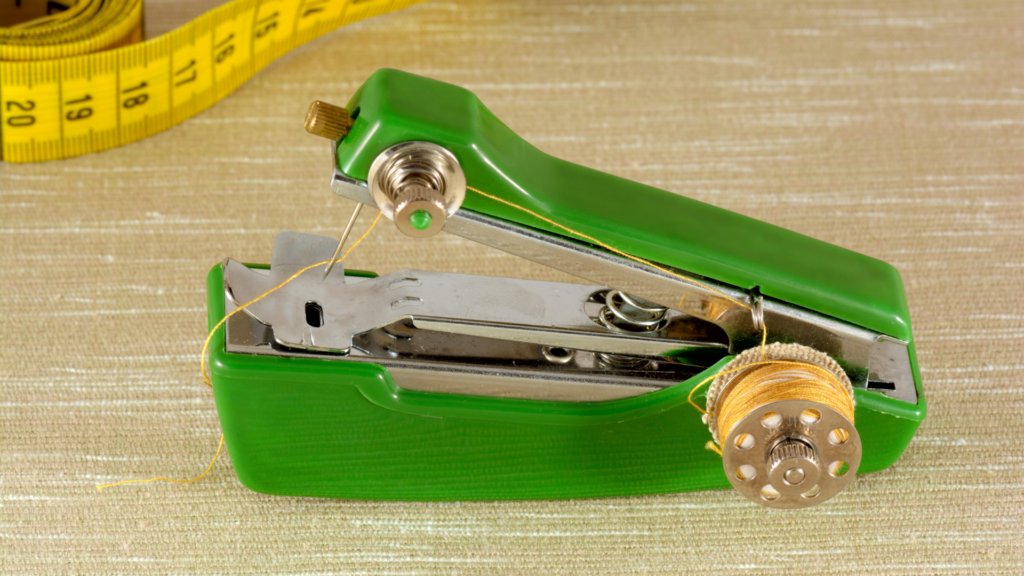
3. Thread the Needle
A notch just above the thread spool pin will be the initial thread guide. Thread the needle through the hole from the bottom to the top.
Make that the thread is flowing through both tension disks. It will aid in the creation of a tighter-looking stitch. If you need to change the tension at any point, you can utilize this knob.
It has to be one of the trickiest steps as the hook under the needle arm is hard to get. I encourage you to understand and learn each instruction here if there is something not clear.
When threading the needle, make sure the thread tip is threaded from the rear of the needle and out to the front.
I recommend using the needle thread that came with your sewing machine to make this job simpler.
4. Start Sewing
Before you sew with this machine, you should know a few things about how to use handheld sewing machine. The rotating wheel is the wheel you see on the side. It permits you to lift and lower the needle manually. It may be angled in any direction.
There’s also a fixing plate, which keeps the cloth in place as you sew. It may be raised to allow the fabric to be placed underneath it.
Beware!! You can make the machine sew if you don’t have the lock in place. That is based on personal experience. You would not want to stitch your finger, do you?
Threading a portable sewing machine is the most challenging aspect, and stitching is the most exciting. A sewer must lift the sewing plate and insert the fabric when threading is completed. You must use your left hand to grasp the cloth and your right hand to handle the machine. Make a mark on the fabric where you’d want to sew. The fabric will be instantly fed into the machine when you switch it on.
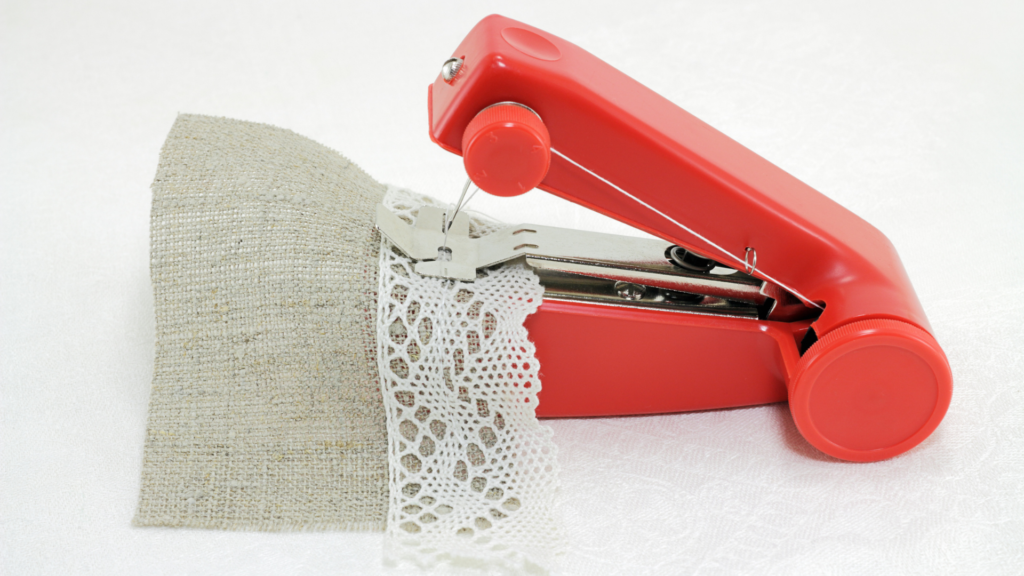
5. Secure the Stitch
After the sewing is completed, the seamstress should seal the thread. Because the portable machine does not provide reverse stitching, the fastening procedure differs from a regular sewing machine.
As a result, lift the fastening plate, draw the thread tight, and cut it. Then, using the rotary wheel, make a loop at the fabric’s end where you wish to attach the threading. Although this is a laborious operation, it is the only way to secure the stitch with a portable machine.
Conclusion
It is not a simple task to learn how to use handheld sewing machines. I hope this blog was beneficial to you.
A portable sewing machine is sometimes mistaken for a small sewing machine. As previously said, a portable sewing machine is only helpful for minor repairing. It’s convenient to carry around.
However, do not expect to use this machine for any large sewing jobs. For that, you’ll need a standard or small sewing machine in a large size.

